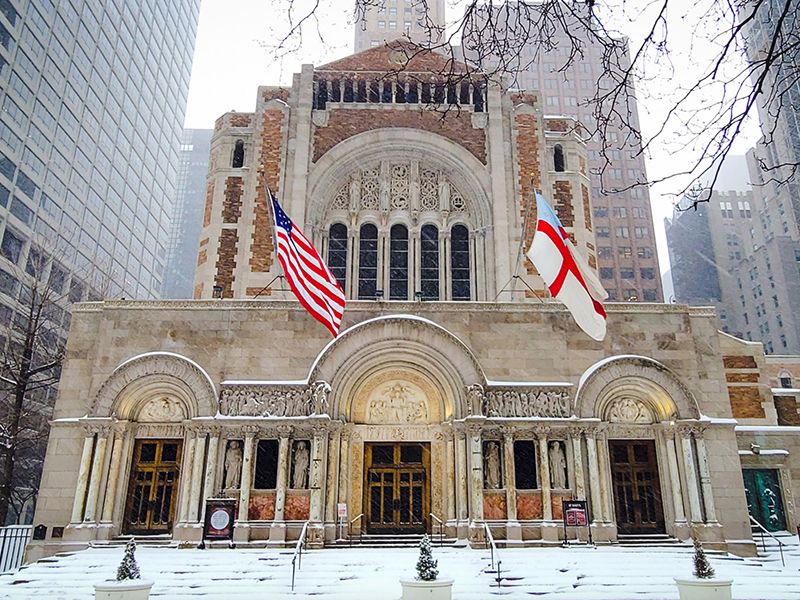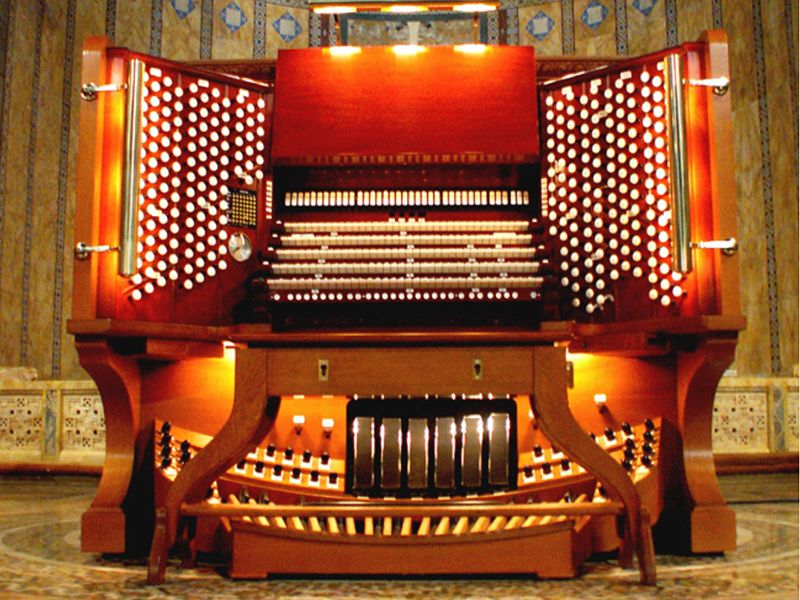Last-Minute NYC Holiday Gift Guide 🎁
We’ve created a holiday gift guide with presents for the intrepid New Yorker that should arrive just in time—


Taking up an entire block on the Upper East Side, St. Bartholemew’s Church, also known as St. Bart’s, is a center for more than religion. In between the church’s masses on Sunday and daily evening prayers, children funnel in and out of its preschool, and musicians cycle through the space to rehearse on the largest pipe organ in New York City.

Architect Bertram Goodhue, known for designing the Nebraska State Capitol building and the Los Angeles Central Library, designed the church in the Romanesque and Byzantine Revival styles beginning in 1916. However, this was not the congregation’s first home. Founded in 1835, the congregation began in NoHo, moved to Midtown, and landed on the Upper East Side. While the church’s first structure was a simple building, it’s second, was designed by St. Patrick’s Cathedral architect James Renwick. featured grand bronze doors designed by French sculptor Philip Martiny.
After structural problems arose in the church’s Midtown building, the search began for a new location for the church that had amassed a reputation as a congregation with great preachers and powerful music. The new location, which still stands, features a portal designed by McKim, Mead & White in 1903 for the church’s Midtown location. The portal honors Alice Vanderbilt‘s late husband, Cornelius Vanderbilt II.
The church’s musical history stretches as far back as its architectural history. Once the church invited renowned British conductor Leopold Stokowski to join the congregation’s musical team, its repertoire of musical giants continued to grow. After Stokowski led St. Bart’s choir and played its famous organ, English organist Edwin H. Lemare and esteemed composer Amy Beach, among others, extended the church’s musical influence.

The centerpiece of St. Bart’s music sphere is its organ, which made its debut in 1901 as a single organ designed by the Ernest M. Skinner Company of Boston. Beginning in 1927, the church expanded the organ, and improvements to the instrument have continued to today. Currently, the organ has 168 stops and over 12,000 pipes with organ blowers now located in a climate-controlled room in the basement. Parts of the organ are placed throughout the church, including a section in the dome. The organ can produce sounds including, “ethereal celestes, colorful flutes, orchestral reeds, and brilliant trumpet,” according to St. Bart’s. Due to St. Bart’s supremacy in the organ world, The Organ Historical Society held its first meeting in the Choir Room at St. Bart’s in 1956.
Past its musical influence, the church offers religious education classes, recovery meetings, and weekly meditation, among other opportunities. For decades, St. Bart’s has opened its doors to thousands of New Yorkers without homes. The church also features Inside Park, a restaurant, which serves American Nouveau fare for lunch and dinner.
Due to its long-term place in New York’s architectural, music, and religious history, the New York Landmarks Commission designated St. Bart’s a National Landmark.
Next, check out 10 New York City churches hiding coffee shops and eateries inside!
Subscribe to our newsletter